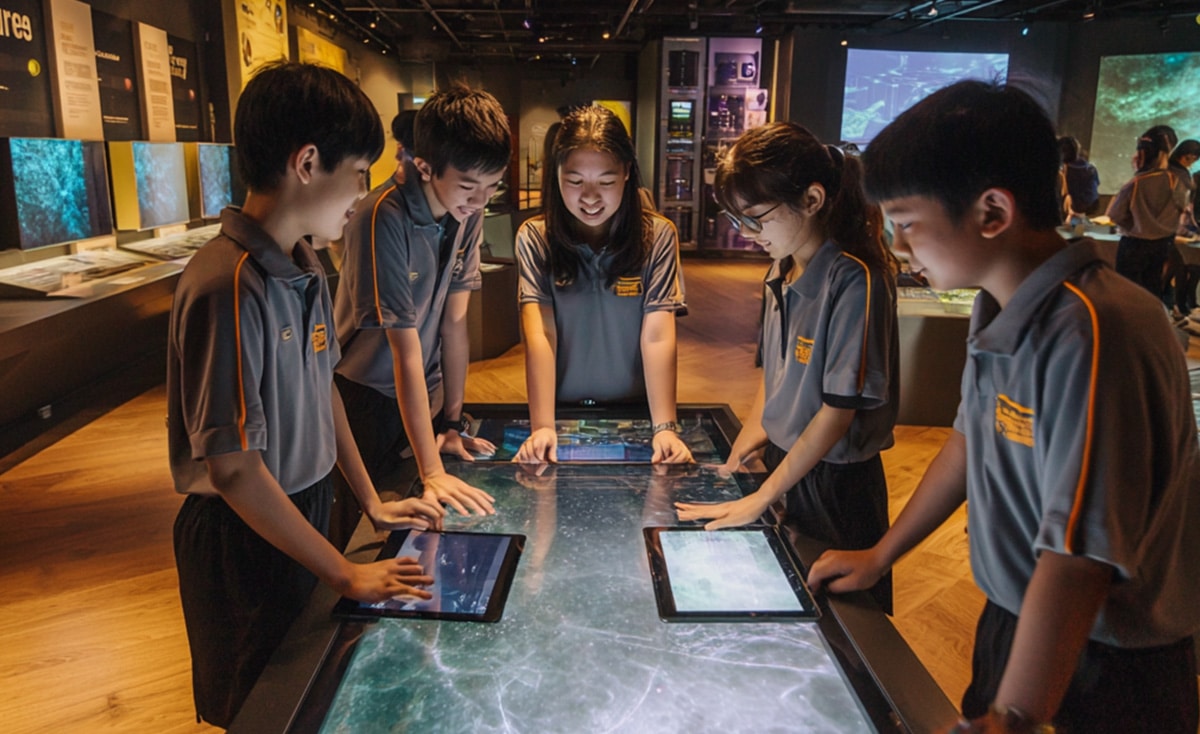
Not every idea fits neatly into place. And maybe the real question is not how we get more people into science centres, but how we get science out into the world where life is already happening.
This is the thinking behind what formula D_ is calling ‘Organic Science Centres’. These spaces present a new way of imagining public learning. Instead of offering science as something to be observed, this approach positions science as something to live with – something that adapts over time, engages you during your everyday life, appears in unexpected places, and continues long after a science centre visit ends (or starts).
This is closely linked to the principles of citizen science, where people are not just passive recipients of knowledge but active participants in observing, questioning and shaping the world around them.
At the core of an Organic Science Centre is the belief that people do not learn in one-off moments.
What matters just as much as the science centre visit, is how often science becomes relatable in the rhythms of everyday life.
The value of community for citizen science
Rather than treating the science centre or museum building as the start and end of the experience, an Organic Science Centre treats the physical site as one part of a larger system. The idea is to design learning environments that follow people rather than expecting people to come to them.
This might happen through pop-up science labs in rural communities or school halls. It could take the form of travelling exhibits that appear at markets, churches or street corners. It may also involve co-created experiments designed with communities to respond to local concerns such as water quality, waste or food production. The aim is not only to bring science closer but to make it more responsive and more reciprocal, and for it to cater for the actual needs of people on the ground.
Sparking interest through co-creation
Many traditional science centres present knowledge in impressive ways but often leave little room for co-creation. In contrast, an organic model designs participation into the system and moves learning into the public space.
At the Exploratorium’s Tinkering Studio in San Francisco, visitors of all ages are invited to build, test and interestingly – to even fail. The studio offers a space to interact with pre-set exhibits as well as a living lab where people’s experiments, designs and questions shape what the centre offers next. This approach embodies co-creation, where the public becomes part of the process of experimentation and learning rather than simply observing outcomes.
In Saudi Arabia, KAUST’s Winter Enrichment Programme brings science out of formal settings through a series of pop-up talks, public events and exhibits. These include science walks, temporary labs and creative spaces like the “Hall of Failure,” where participants are encouraged to share experiments that didn’t go as planned. By teaching people to fail quickly and then succeed, and inviting people to learn alongside researchers, these pop-ups show how science communication can be honest and participatory.
Continuous engagement through digital communities
Science learning doesn’t have to end when the visit ends. Centres like Science Centre Singapore have created innovation labs and digital platforms that allow visitors to continue their learning journeys well beyond the walls. These include online maker challenges that encourage hands-on creativity at home, citizen projects where the public can collect and contribute real data for research initiatives, and interactive portals that connect learners with peers and mentors across schools, cities, and even countries.
In this way, the digital layer isn’t perceived as a separate track and rather an extension of the learning relationship.
Rooting out the learning experience with digital branches
Some centres are also experimenting with personalised pathways. By using tools such as learning profiles or AI-assisted guides, science centres help visitors track what they have explored and suggest next steps aligned with their interests. This journey can continue through a visitor’s own personal learning device, allowing them to access customised content, challenges or digital notes long after they’ve left the building.
Though this kind of adaptive learning might sound futuristic, it is grounded in a simple idea: when people are recognised and supported in their curiosity, they are more likely to stay engaged.
Why science centres need to be responsive
Ultimately, the idea of an Organic Science Centre is not about replacing on-site experiences. It is about deepening them through ongoing connection. While it uses technology and mobility to extend its reach, it also places value on what is local, grounded and importantly, what is socially relevant. That might mean aligning programmes with indigenous knowledge systems, climate resilience efforts, or community-led innovation.
What’s important is that it isn’t a destination but an ongoing journey. It is a living system that keeps teaching, listening and showing up in the places where it matters most.



